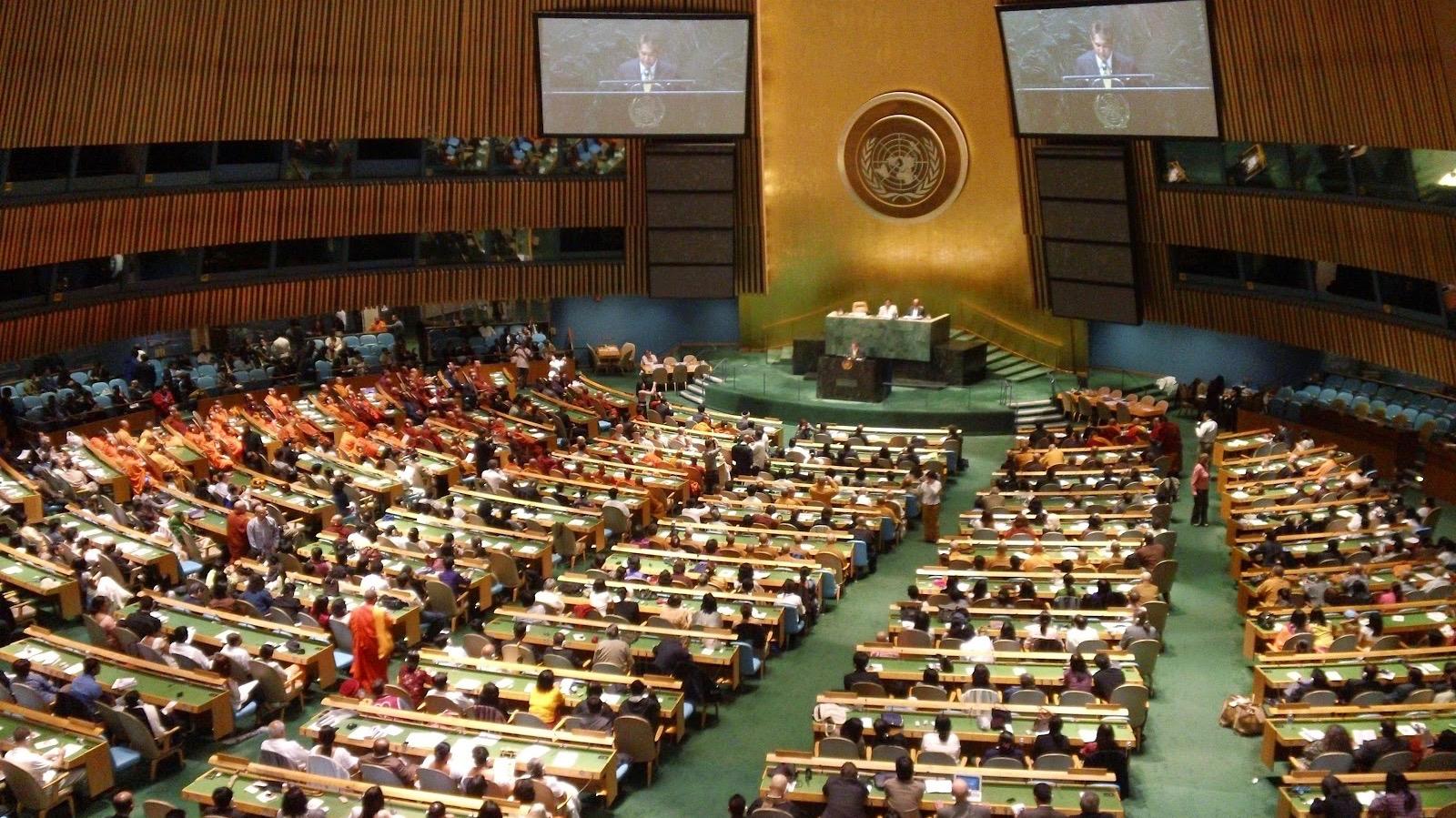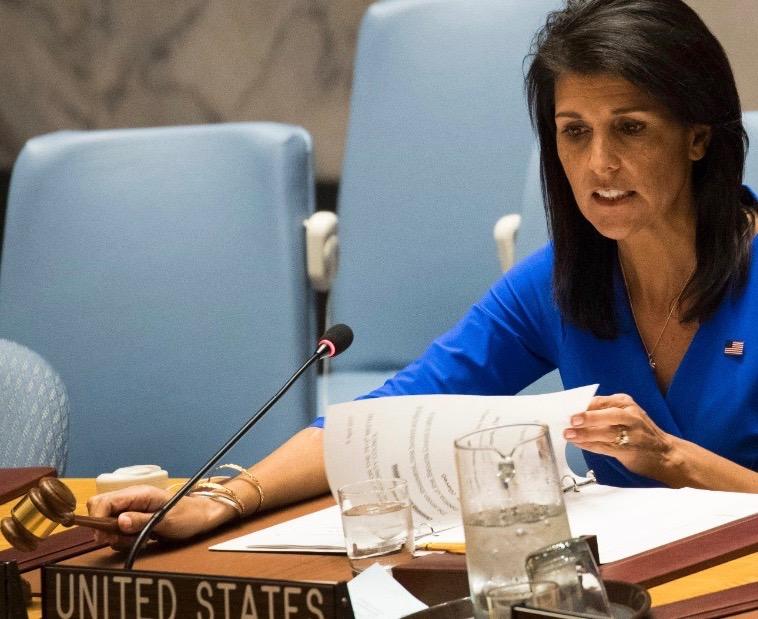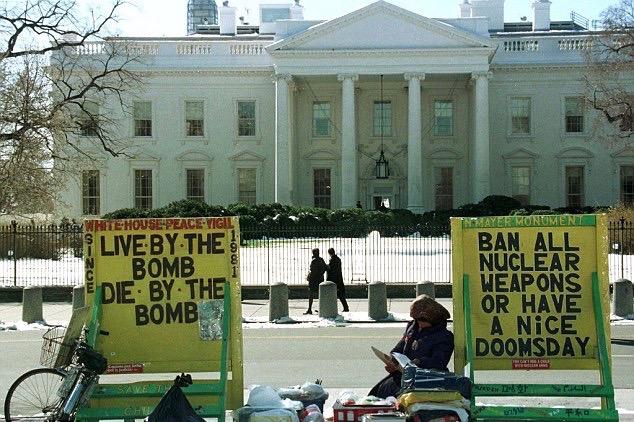Imagining the Right to Peace
archive

Imagining the Right to Peace
In 1945, after two horrific wars claimed nearly 100 million lives across the globe, the countries of the world came together and created the United Nations system “to save succeeding generations from the scourge of war.” By adopting these words as the lynchpin of the U.N. Charter, the member states imagined that peace was possible. But the adoption of the Charter and the U.N. system did not put an end to war. Indeed, the resort to military force has become the default method of resolving—yet also, repeatedly creating—international disputes.
It is time to rekindle what the drafters of the Charter imagined. That requires instilling in the public imagination the notion that peace is possible. Is there a human right to peace? There is indeed, and much needs to be done to make that right a reality.
Legal Codification of the Right to Peace
Peace is not simply the absence of war. Peace requires that all states refrain from interfering in the internal affairs of other states, settle their disputes through negotiations, and create conditions necessary to eliminate the causes of international conflict, including an end to the arms race. The right to peace is inherent in the very fabric of the U.N. Charter. Through the Charter and subsequent U.N. resolutions, the human right to peace is ripening into a norm of international law.
Article 2(3) requires that member states “shall settle their international disputes by peaceful means in such a manner that international peace and security, and justice, are not endangered.” Moreover: “All members shall refrain in their international relations from the threat or use of force against the territorial integrity or political independence of any state,” according to Article 2(4). Under Article 51, member states are only permitted to use military force in self-defense after an armed attack by another state or with the approval of the Security Council. In 1970, the U.N. General Assembly (GA) adopted Resolution 2625, which defines the non-intervention mandate as “an essential condition to ensure that nations live together in peace with one another.”
The right to peace is inherent in the very fabric of the U.N. Charter. Through the Charter and subsequent U.N. resolutions, the human right to peace is ripening into a norm of international law.
GA Resolution 33/73, promulgated in 1978, states, “Every nation and every human being, regardless of race, conscience, language or sex, has the inherent right to live in peace.” And in 1984, during the Cold War when the danger of nuclear war was ubiquitous, the GA adopted Resolution 39/11, which “solemnly proclaims . . . a sacred right to peace” whose realization constitutes “a fundamental obligation of each state.” To ensure the right to peace, state policies must “be directed towards the elimination of the threat of war, particularly nuclear war,” according to Resolution 39/11.

Recent Violations of the Right to Peace
Shortly after the September 11, 2001 terrorist attacks, George W. Bush invaded Afghanistan, even though it had not attacked the U.S. The terrorists—nineteen men, including 15 from Saudi Arabia—committed a crime against humanity, but it was not an Afghan military operation. Bush’s invasion therefore did not constitute lawful self-defense and the Security Council did not approve it. Yet what is now the U.S.’s longest war continues to claim lives. Then in 2003, before he invaded Iraq and changed its regime, Bush tried to secure the imprimatur of the Council for his intervention. The Council refused. Bush then cobbled together prior Council resolutions from the first Gulf War in an unsuccessful attempt to legitimize his illegitimate war, which was not conducted in self-defense. Bush’s war on Iraq was a disaster that keeps on giving. It has resulted in hundreds of thousands of deaths, led to the rise of ISIS, and dangerously destabilized the region.
John Bolton, Bush’s temporary U.N. ambassador, infamously declared, “There is no United Nations. There is an international community that occasionally can be led by the only real power left in the world, and that is the United States, when it suits our interest, and when we can get others to go along.” Bolton added, “When the United States leads, the United Nations will follow. When it suits our interest to do so, we will do so.”
Democratic presidents have not fared much better in making the promise of the United Nations a reality. Bill Clinton could have helped prevent the genocide in Rwanda. Instead, he stopped the U.N from acting to halt the killing of 800,000 people there. Clinton’s secretary of state, Madeleine Albright, called the U.N. “a tool of American foreign policy.”
The pattern of law-breaking continued during the Obama administration. Its program of targeted killing with drones and manned bombers violated the Charter and the Geneva Conventions. Obama’s forcible regime change in Libya violated the ICCPR and created another vacuum that ISIS filled. Now Donald Trump’s administration is violating the Charter and the Geneva Conventions by targeting civilians in Syria and Iraq, and launching 59 Tomahawk missiles in Syria. These actions constitute war crimes.

U.S. Ambassador to the United Nations, Nikki Haley.
Why Isn’t the Right to Peace a Reality?
Why hasn’t the right to peace become a reality? Because the only international forum for peacekeeping is failing to live by its stated principles, and instead is continuing to serve largely as an instrument of U.S. foreign policy.
The Trump administration has, like it’s predecessors, thwarted the United Nations in other ways. Nikki Haley, Trump’s U.N. ambassador, thwarted a U.N. report in which independent experts concluded “beyond a reasonable doubt” that Israel’s treatment of the Palestinians constitutes “the crime of Apartheid.” Pressured by Haley, the U.N. secretary general removed the report from the U.N. website. The chairperson of the U.N. agency that published the report resigned in protest against the removal.
In April, 2017, all 100 U.S. senators signed a letter to the U.N. secretary general decrying “the U.N.’s anti-Israel bias” and “continued targeting of Israel by the U.N. Human Rights Council (HRC) and other U.N. entities.” Israel’s Ministry of Foreign Affairs had called the HRC biased because it issued the 2009 Goldstone Report, prepared under the direction of noted Judge Richard Goldstone. The report found Israel guilty of international law violations in its December 2008-January 2009 war on Gaza, which killed 1,400 Palestinians and 13 Israelis.
In 2016, under pressure from the Israel lobby, President Obama approved a record $38 billion in military aid for Israel over the next 10 years. But as his presidency came to an end, Obama finally stood up to Israel. When the Security Council voted to condemn Israel for building illegal settlements in occupied Palestinian territories, Obama’s administration abstained instead of issuing a veto, which allowed the resolution to pass. Resolution 2334 says the settlements have “no legal validity,” calls them “a flagrant violation under international law,” and demands Israel “immediately and completely cease all settlement activities.” The newly elected, but not yet inaugurated, President Trump intervened unsuccessfully to prevent Resolution 2334 from coming to the Council floor.
In order to prevent the International Criminal Court (ICC) from investigating and prosecuting Israel, the United States opposed Palestine becoming a party to the Rome Statute. Palestine, recognized as a non-member observer state by the GA, acceded to the Statute in 2015 and asked the ICC to investigate Israel for building illegal settlements and committing war crimes in Gaza. The ICC prosecutor opened a preliminary investigation, which is currently pending.
Why hasn’t the right to peace become a reality? Because the only international forum for peacekeeping is failing to live by its stated principles...
The U.S. government continues to resist accountability for its own violations of the law by refusing to ratify the Rome Statute, which provides for prosecution of individual leaders for war crimes, genocide, crimes against humanity, and eventually, the crime of aggression. Obama declared, “I don’t believe that anybody is above the law. On the other hand, I also have a belief that we need to look forward as opposed to looking backwards.” Those responsible for committing war crimes during the Bush administration were never brought to justice, which signaled to Trump he could commit war crimes with impunity.
How Do We Enforce the Right to Peace?
We cannot count on the U.S. government to enforce the right to peace. Each successive administration has used military force in violation of the U.N. Charter. Clinton bombed Kosovo and Iraq. Bush invaded Afghanistan and Iraq. Obama continued Bush’s wars and used drones in seven countries. And Trump continues the wars and drone bombings and has escalated by bombing Syria.
Since his inauguration, Trump’s attacks on workers, immigrants, the poor, women, LGBTQ people and the environment have propelled hundreds of thousands of people into the streets, their congresspersons’ offices, and town hall meetings. But there are not large numbers of people protesting Trump’s military interventions. There is almost no pushback in Congress, even among Democrats. The corporate media parrots the administration’s line on the need to bomb Syria. Most people in the U.S. are unaware that Trump’s foreign policy not only violates US and international laws but also makes us less safe. When people elsewhere see their loved ones cut down by U.S. bombs, they seek to do us harm.

Concepcion Picciotto, 30-year vigil against nuclear arms in Lafayette Park.
We must organize mass protests to demand that Washington comply with the Charter by refraining from attacking other countries and joining with Russia, Turkey, Iran and Syrian president Bashar al-Assad to pursue a diplomatic solution to the war in Syria. We must work toward nuclear disarmament in accordance with our legal obligations under the Nuclear Non-Proliferation Treaty.
Trump’s provocation of North Korea creates a risk of nuclear conflagration. Astoundingly, he has indicated a willingness to use nuclear weapons as a tool of foreign policy. But if one steps back from the drama surrounding Trump’s ties with Russia and his firing of the FBI director, the benefits of closer relations with Russia come into focus. Stoking the flames of a new Cold War between the two most heavily armed nuclear powers imperils the right to peace.
There is little awareness in the United States about the human right to peace. It is critical that we educate people about our legal obligations, by writing, speaking out and widely circulating articles about the right to peace. The first step toward making peace a reality is to imagine that peace is possible.



